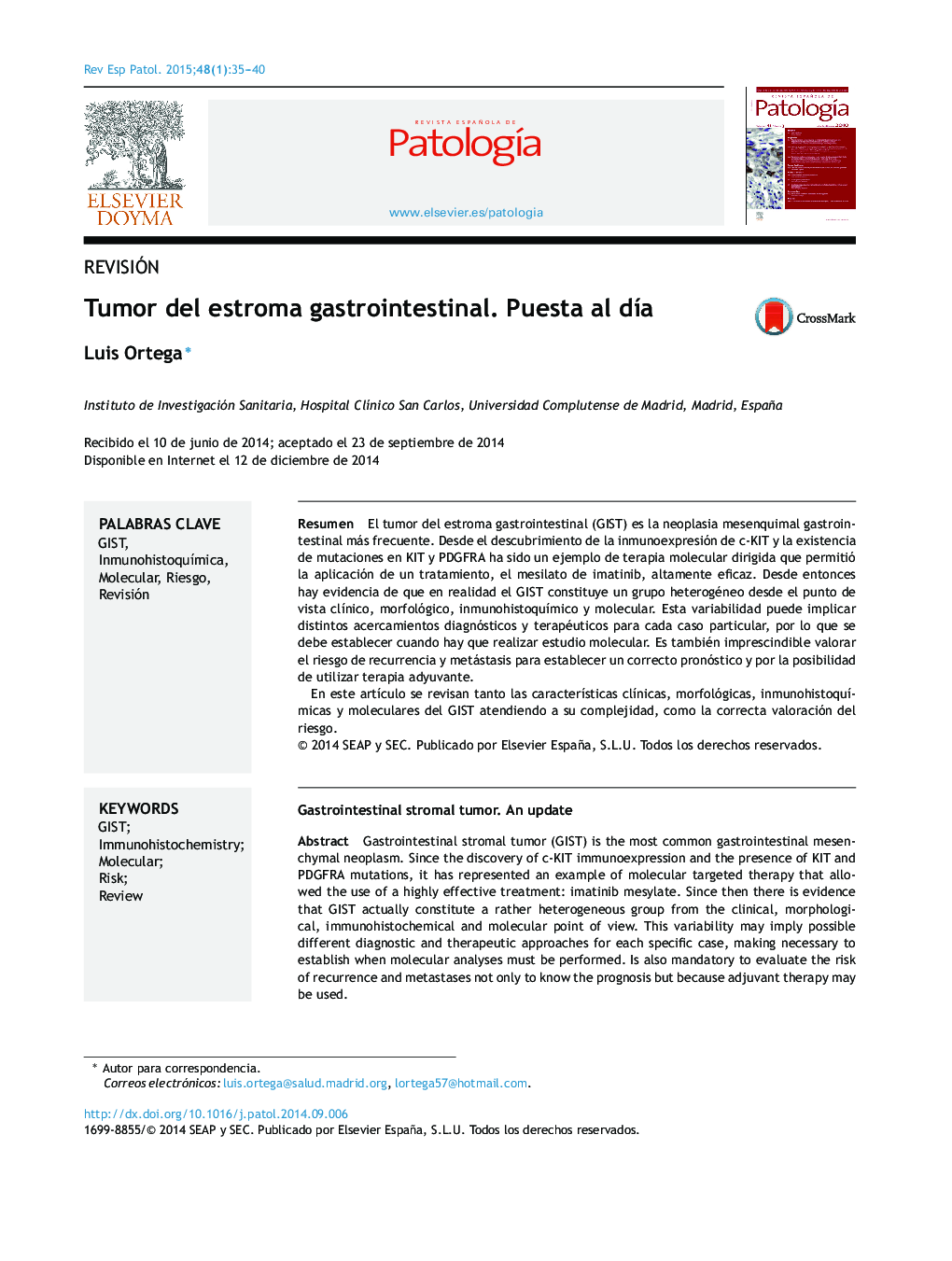| Article ID | Journal | Published Year | Pages | File Type |
|---|---|---|---|---|
| 4137697 | Revista Española de Patología | 2015 | 6 Pages |
ResumenEl tumor del estroma gastrointestinal (GIST) es la neoplasia mesenquimal gastrointestinal más frecuente. Desde el descubrimiento de la inmunoexpresión de c-KIT y la existencia de mutaciones en KIT y PDGFRA ha sido un ejemplo de terapia molecular dirigida que permitió la aplicación de un tratamiento, el mesilato de imatinib, altamente eficaz. Desde entonces hay evidencia de que en realidad el GIST constituye un grupo heterogéneo desde el punto de vista clínico, morfológico, inmunohistoquímico y molecular. Esta variabilidad puede implicar distintos acercamientos diagnósticos y terapéuticos para cada caso particular, por lo que se debe establecer cuando hay que realizar estudio molecular. Es también imprescindible valorar el riesgo de recurrencia y metástasis para establecer un correcto pronóstico y por la posibilidad de utilizar terapia adyuvante.En este artículo se revisan tanto las características clínicas, morfológicas, inmunohistoquímicas y moleculares del GIST atendiendo a su complejidad, como la correcta valoración del riesgo.
Gastrointestinal stromal tumor (GIST) is the most common gastrointestinal mesenchymal neoplasm. Since the discovery of c-KIT immunoexpression and the presence of KIT and PDGFRA mutations, it has represented an example of molecular targeted therapy that allowed the use of a highly effective treatment: imatinib mesylate. Since then there is evidence that GIST actually constitute a rather heterogeneous group from the clinical, morphological, immunohistochemical and molecular point of view. This variability may imply possible different diagnostic and therapeutic approaches for each specific case, making necessary to establish when molecular analyses must be performed. Is also mandatory to evaluate the risk of recurrence and metastases not only to know the prognosis but because adjuvant therapy may be used.In this paper the clinical, morphological, immunohistochemical and molecular features of GIST and the correct evaluation of risk are reviewed attending to its complexity.
